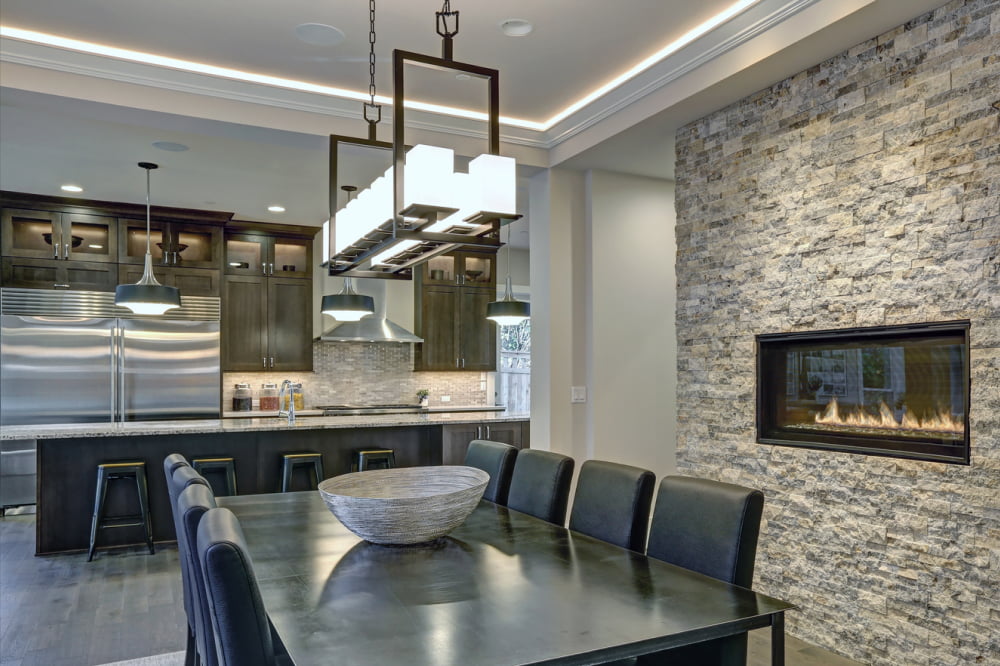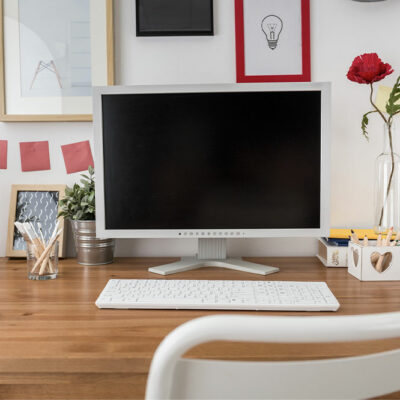
Types of lights to enhance the existing home décor
Lighting helps set the mood of a room. When done correctly, the results are simply jaw-dropping! You can play around with different types of lights in different areas of the house to see what works. While at it, you can even experiment with smart fixtures that integrate with the internet for remote control. If you can’t think of anything, look at these simple types of lights for home décor and find inspiration!
Ambient lighting
This is the most basic type of lighting that illuminates a room or a particular area, such as the dining space. The light could reflect off walls for uniform brightness throughout. The primary ambient light source could be anything, like a chandelier, pendant lights, or LEDs. Many homeowners prefer chandeliers hung from the ceiling as they both enhance the look and feel of the room while illuminating the entire space. Don’t limit your creativity when installing chandeliers. You can add a single unit in the middle of the room or multiple at fixed intervals.
If you decide to buy pendant lights for ambient lighting, you will find many modern options with LEDs. LED lights provide a cooler shade that doesn’t strain the eyes when switched on for extended periods. They’re also more energy efficient and come in various colors. That said, do give the classic incandescent ones a try as well. Their warm lighting with a yellow hue emanates a cozy vibe.
Regardless of the type of ambient light you choose for home décor, check whether it has automatic dimmers and diffuser controls. This help adjust the brightness in the room to a level you find comfortable.
Ceiling or accent lighting
Ceiling lights differ from chandeliers and pendant lights in terms of design. They’re generally smaller and placed closer to each other in a straight line, perfect for brightening up a poorly lit hallway or passageway. These lights also add a unique character to a room and its ambiance by drawing eyeballs to a high ceiling or another design element that demands attention.
Designers suggest using fluorescent bulbs or tubes for ceiling lights. Of course, your room’s design and layout can influence this decision. You can experiment with various patterns and styles to modify the existing vibe of a house. For example, try installing smaller accent lights around the ceiling lights.
Task lighting
Task lights focus on a particular area that needs higher visibility. For example, a desk lamp is a task light designed to illuminate a desk for study or an office space for work. Task lights are brighter than ambient lights and aim at areas that need illumination.
Desk and study table lamps are suitable for corners, where you can read a book or work on a computer without turning on the main lights. But consider vanity lighting for the washroom areas. This type of task light improves the clarity of your reflection in the mirror. It’s better than overhead ambient lights that might offer lesser illumination, making it challenging to go about your daily grooming tasks. Consider installing cabinet lights to illuminate these dark underspaces and corners.
Decorative lighting
This lighting improves a home’s aesthetics by cutting out the glare caused by ambient or ceiling lights and ensuring particular objects are in better focus. For example, a decorative lighting fixture near the entrance helps illuminate the pathways near the door and eliminates the need for a fixed spotlight.
Decorative lights can be placed over the dining table in the kitchen area to complement existing ceiling or pendant lights. Further, if you have beautiful pieces of artwork installed around the house, decorative lighting can provide more emphasis on them. With the correct type of accent and decorative lights installed in these spaces, you can transform your home ambiance for people to admire the décor in awe!
Types of lights to buy
Now that you’re familiar with a few lighting ideas, take a look at the types of lighting fixtures that can bring these ideas to life:
Chandeliers, pendant lights, and wall lights
These facilitate indoor ambient lighting. You can install one big light fixture or spread out several lighting accessories to cover as much area as possible. The room size plays a vital role in deciding these installations.
Recessed lights
Recessed lights are a great alternative to chandeliers and pendant lights. They’re built into the walls and spaced out at equal intervals. These lights help concentrate the luminance downward and create a harsh glare in one spot, similar to what you’d get with a spotlight. Dozens of smaller recessed lights are often installed in close proximity to offset the glare created by a single unit.
Wall lights and wall scones
There are many types of wall lights, including LED fixtures to improve accent lighting and special fluorescent tubes for illuminating a specific object around the area. If you have a sharp ceiling or ambient light that’s too bright, wall lights can cut across the glare and diffuse luminance effectively. Wall scones are different in terms of design and purpose, as most of these light fixtures are only meant to be decorative pieces. These can be either built into the existing wiring or plugged in using power sockets.
These days, many lighting companies and popular brands are installing smart features in light fixtures for seamless integration with existing smart home technology. Smart lights can be synched up gadgets featuring voice control for switching on, adjusting brightness, and auto-switching off the installed lights. Some apps let you control the color temperature intensity and even customize the layout of smart LED bulbs. Take some time out to research a little more about the different types of lights for home décor and make an informed decision.


